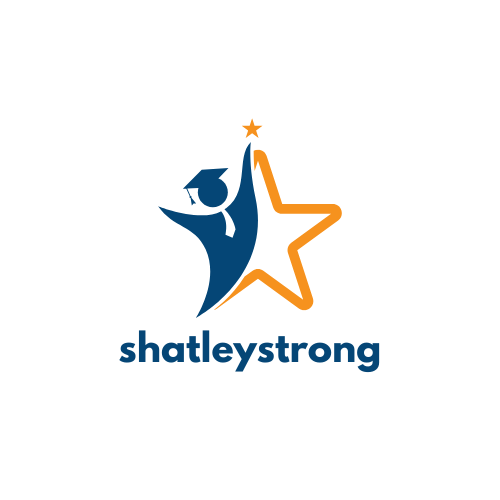Table of Contents
ToggleIn a world where traditional lectures can feel more like a snooze-fest than a learning experience, project-based learning (PBL) bursts onto the scene like a double shot of espresso. This dynamic approach transforms education from passive note-taking to active problem-solving, engaging students in real-world projects that spark creativity and collaboration. Who wouldn’t want to learn while building a bridge or launching a mini-business?
PBL isn’t just a buzzword; it’s a game-changer. It equips students with critical thinking skills and practical knowledge, making them not just learners but doers. By diving into hands-on projects, they tackle challenges that mirror the complexities of life beyond the classroom. So, if you’re ready to ditch the stale textbooks and embrace a learning style that’s as engaging as it is effective, project-based learning might just be the ticket to academic success.
Overview of Project-Based Learning
Project-based learning (PBL) emphasizes active engagement through real-world projects that drive student learning. This approach inspires creativity and collaboration, allowing learners to immerse themselves in tasks that require critical thinking. Students work on meaningful projects, addressing complex questions and challenges tied to various subjects.
PBL encourages deeper understanding by connecting academic concepts to practical applications. Learners explore topics in-depth, resulting in a more comprehensive grasp of the material. They engage in peer discussions, share insights, and develop essential interpersonal skills throughout the learning process.
Assessment in project-based learning diverges from traditional methods. Evaluation focuses on the process and product of the project, offering a holistic view of student performance. Educators utilize rubrics that highlight teamwork, creativity, and problem-solving abilities, ensuring a fair representation of student capabilities.
Schools adopting PBL often witness enhanced motivation and attendance among students. Interest in learning increases when students see the relevance of their work, fostering a sense of ownership over their education. They develop resilience and adaptability, crucial traits in today’s evolving job market.
PBL models vary widely, catering to different educational settings and learning objectives. Examples include interdisciplinary projects, community service initiatives, and technology-driven assignments. Each model adapts to specific needs while maintaining the core principles of project-based learning.
Ultimately, project-based learning reshapes how education unfolds, moving beyond memorization to foster a culture of inquiry and exploration. Its application not only cultivates academic skills but also prepares students for future challenges in their careers and personal lives.
Benefits of Project-Based Learning

Project-based learning (PBL) offers various advantages that significantly enhance the educational experience. Emphasizing real-world applications, PBL encourages deeper understanding and skill development.
Enhancing Critical Thinking Skills
Critical thinking skills receive a notable boost through project-based learning. Students engage in inquiry and reasoning while exploring complex problems. They analyze information, evaluate sources, and synthesize solutions. This process fosters independence and confidence as they navigate challenges. Additionally, assessing outcomes promotes reflection, allowing learners to consider alternative perspectives and approaches. With PBL, students develop analytical skills essential for academic success and future careers.
Promoting Collaboration and Communication
Collaboration and communication flourish in a project-based learning environment. Students work in teams, sharing ideas and dividing tasks effectively. This active participation builds interpersonal skills crucial for workplace success. They learn to listen, negotiate, and resolve conflicts as they collaborate toward common goals. Feedback exchange becomes an integral part of their process, enhancing their ability to articulate thoughts clearly. Through these experiences, PBL prepares students for diverse settings where teamwork plays a pivotal role.
Key Components of Successful Project-Based Learning
Project-based learning relies on several key components to ensure success. These elements help create an engaging and effective learning environment.
Real-World Relevance
Real-world relevance serves as a cornerstone in project-based learning. Students tackle issues or questions that reflect actual challenges, making learning more meaningful. Research indicates that when students connect their projects to real-life situations, they show increased motivation and retention. Engaging with community partners or professionals enhances this relevance, providing insights and mentorship opportunities. As a result, students develop a better understanding of how their academic work applies outside the classroom, fostering a sense of purpose and investment in their learning.
Student Autonomy and Agency
Student autonomy and agency empower learners in project-based learning environments. Allowing students to make choices about their projects fosters ownership and commitment. Their involvement in decision-making encourages creativity and innovative thinking. Academic studies show that when students are actively involved in shaping their learning experiences, they become more responsible and self-directed. Establishing guidelines while allowing flexibility enables students to explore topics that ignite their passion. This balance of structure and freedom promotes deeper learning as students take control of their educational journeys.
Reflection and Assessment
Reflection and assessment play crucial roles in project-based learning. This process involves evaluating both the outcomes and the learning journey. Incorporating regular reflection periods enables students to consider what they’ve learned, the challenges faced, and the strategies utilized. Assessment approaches differ from traditional methods by focusing on ongoing progress and collaboration. Utilizing rubrics that emphasize teamwork, creativity, and problem-solving provides clear criteria for success. Research shows that this type of reflective assessment encourages growth and adaptability, preparing students for future academic and professional endeavors.
Challenges in Implementing Project-Based Learning
Implementing project-based learning (PBL) presents several challenges that educators must navigate.
Teacher Training and Resources
Training teachers in PBL practices can prove difficult. Many educators lack experience in facilitating projects that foster collaboration and inquiry. Professional development programs focused on PBL are essential, yet funding for these initiatives often falls short. Additionally, schools need access to diverse resources like materials and technology to support project creation. Successful implementation also relies on teachers feeling confident in their ability to guide students through projects. Developing comprehensive training that addresses these needs is key to overcoming resistance and enhancing PBL effectiveness.
Time Constraints and Curriculum Requirements
Time constraints frequently hinder the adoption of PBL in classrooms. Teachers often struggle to balance curriculum requirements against the extensive time projects demand. Standardized testing schedules can restrict the flexibility needed for in-depth exploration of topics. Adjusting pacing guides may help, yet educational institutions may resist changes. Many educators feel torn between meeting mandated content standards and providing meaningful learning experiences through projects. Addressing these time management challenges is crucial for successful implementation and sustaining teacher engagement in PBL initiatives.
Project-based learning stands as a transformative approach to education that actively engages students in meaningful and relevant projects. By fostering critical thinking creativity and collaboration PBL not only enhances academic skills but also prepares students for real-world challenges. The emphasis on student autonomy and reflection further cultivates a sense of ownership and commitment to their learning journey.
While implementing PBL presents certain challenges for educators the benefits far outweigh the obstacles. With the right support and resources schools can create an environment where students thrive and develop essential skills for future success. Embracing project-based learning can truly reshape educational experiences and empower the next generation of learners.




